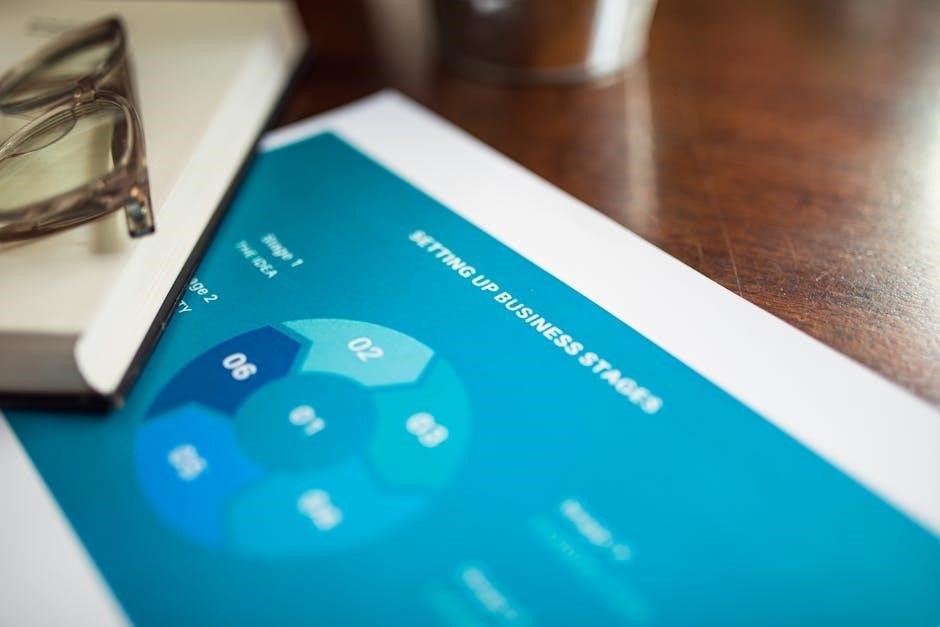A pulse oximeter is a non-invasive device that measures oxygen saturation in the blood. This information is crucial for assessing respiratory health. It helps monitor conditions affecting oxygen levels and guide medical intervention.

What is a Pulse Oximeter?
A pulse oximeter is a compact‚ user-friendly medical device designed to non-invasively monitor a person’s oxygen saturation (SpO2) and pulse rate. It clips onto a fingertip‚ toe‚ or earlobe‚ emitting light beams through the blood vessels. The device then measures the amount of light absorbed‚ which correlates with the level of oxygen bound to hemoglobin in the red blood cells.
This provides a quick and convenient way to assess how efficiently oxygen is being carried throughout the body. Pulse oximeters are widely used in hospitals‚ clinics‚ and even at home for managing respiratory conditions‚ monitoring patients with COVID-19‚ and assessing overall well-being. They offer a valuable tool for both healthcare professionals and individuals to track vital signs and make informed decisions regarding their health.
The readings are displayed digitally‚ providing immediate feedback on oxygen saturation and heart rate. This allows for timely detection of any abnormalities that may require medical attention.

How a Pulse Oximeter Works
A pulse oximeter utilizes a straightforward yet ingenious technique called spectrophotometry to determine blood oxygen saturation. The device emits two wavelengths of light: red and infrared‚ which pass through the tissue at the application site‚ typically a fingertip. Oxygenated hemoglobin absorbs more infrared light‚ while deoxygenated hemoglobin absorbs more red light.
Sensors within the pulse oximeter measure the amount of each type of light that passes through the tissue. By comparing the absorption rates of red and infrared light‚ the device calculates the percentage of hemoglobin saturated with oxygen‚ providing an SpO2 reading. Simultaneously‚ the pulse oximeter detects the pulsatile flow of blood‚ allowing it to measure the heart rate.
The entire process is non-invasive and painless‚ providing real-time information about a person’s oxygen levels and pulse. The displayed SpO2 value reflects the percentage of hemoglobin in the blood that is carrying oxygen.

Normal Pulse Oximeter Readings
Normal pulse oximeter readings typically range from 95% to 99% for SpO2‚ indicating adequate oxygen saturation. Heart rate usually falls between 60 and 100 bpm for adults‚ varying with age and fitness.
SpO2 Normal Range
The SpO2 normal range‚ representing oxygen saturation levels in arterial blood‚ is a vital indicator of respiratory function. Typically‚ a healthy individual should exhibit SpO2 readings between 95% and 99% when breathing room air. These values suggest that the lungs are effectively transferring oxygen into the bloodstream. However‚ it’s essential to note that certain pre-existing conditions‚ such as chronic lung diseases or sleep apnea‚ may result in slightly lower normal SpO2 ranges‚ often around 90%.
Readings consistently below 90% warrant immediate medical attention. Factors such as altitude‚ individual physiology‚ and specific medical conditions can influence SpO2 levels. Monitoring SpO2 within the appropriate range is paramount for managing respiratory health and detecting potential issues. Consult a healthcare professional for personalized SpO2 targets.
Heart Rate Normal Range
The heart rate normal range‚ measured in beats per minute (bpm)‚ indicates cardiovascular health. A typical resting heart rate for adults usually falls between 60 and 100 bpm. However‚ this range can vary based on age‚ fitness level‚ and overall health. Trained athletes‚ for instance‚ may exhibit resting heart rates as low as 40 bpm‚ reflecting efficient cardiovascular function.
Factors like stress‚ medication‚ and underlying medical conditions can influence heart rate. Monitoring heart rate alongside SpO2 provides a comprehensive assessment of physiological well-being. Deviations from the normal range‚ such as persistent tachycardia (high heart rate) or bradycardia (low heart rate)‚ may signal underlying health concerns. It is crucial to consult with a healthcare professional.
Pulse Oximeter Readings Chart by Age
Pulse oximeter readings can vary slightly with age‚ reflecting physiological changes throughout life. While a normal SpO2 range generally remains between 95% and 99% for healthy individuals‚ certain age groups may exhibit variations. Infants‚ for example‚ may have slightly different normal ranges compared to adults due to their developing respiratory systems. Similarly‚ older adults might experience lower SpO2 levels due to age-related changes in lung function.
A pulse oximeter readings chart by age provides a valuable reference for understanding these expected variations. These charts typically outline the normal SpO2 and heart rate ranges for different age groups‚ from infants to older adults. Consulting such a chart alongside individual readings can help in accurately interpreting the data and identifying potential concerns.
Factors Affecting Pulse Oximeter Accuracy
Several factors influence pulse oximeter accuracy‚ including correct finger position‚ skin perfusion‚ and external conditions. Understanding these factors ensures reliable readings for effective health monitoring and informed decision-making.
Correct Finger Position
Ensuring correct finger placement in the pulse oximeter is vital for accurate readings. The device uses light to measure oxygen saturation; improper placement can obstruct this process. The finger should be clean‚ dry‚ and free of nail polish‚ which can interfere with light transmission.
The finger needs to be fully inserted into the device‚ ensuring the sensor aligns properly with the fingertip. Movement during measurement can also cause inaccuracies‚ so it’s essential to remain still. Cold hands can reduce blood flow‚ affecting readings; warming them can help.
Consider using an alternative site‚ such as a toe or earlobe‚ if finger readings are unreliable. Proper finger position optimizes the device’s ability to accurately assess blood oxygen levels‚ leading to better health monitoring.
Perfusion Index (PI)
The Perfusion Index (PI) is a numerical value indicating the strength of the pulse signal at the monitoring site. It provides insight into the peripheral blood flow. PI values range from 0.02 (weak pulse) to 20 (strong pulse)‚ helping assess the reliability of SpO2 readings.
A higher PI generally indicates better blood flow and a more optimal monitoring site. Factors like temperature‚ hydration‚ and underlying health conditions can influence PI. Low PI values may suggest poor perfusion‚ potentially leading to inaccurate oxygen saturation measurements.
Monitoring PI alongside SpO2 can provide a more comprehensive understanding of a patient’s condition. It helps healthcare professionals determine the best site for accurate pulse oximetry. Understanding PI enhances the clinical utility of pulse oximeters.
When to Consult a Healthcare Provider
Consult a healthcare provider if pulse oximeter readings are consistently outside the normal range. Also seek advice if experiencing symptoms like shortness of breath‚ or chest pain‚ regardless of the reading.
Concerning Blood Oxygen Levels
Blood oxygen levels are a vital indicator of respiratory health‚ and monitoring them is important‚ especially with conditions like COVID-19 or chronic lung issues. If your pulse oximeter consistently shows readings below 95%‚ it’s cause for concern and medical consultation. Levels between 91% and 95% might indicate a moderate issue that needs evaluation‚ particularly if accompanied by symptoms.
Readings at or below 90% are considered low and require immediate medical attention. Such low saturation can lead to hypoxia‚ affecting brain function and other bodily processes. Symptoms like shortness of breath‚ confusion‚ or cyanosis (bluish skin) along with low readings are red flags.
Individuals with pre-existing lung conditions may have slightly lower baseline levels; it’s crucial to know their normal range and consult a doctor about concerning thresholds. Remember‚ a pulse oximeter is a tool‚ and its readings must be interpreted in conjunction with clinical assessments.

Pulse Oximeter Use with Lung Conditions
For individuals managing chronic lung conditions like COPD or asthma‚ pulse oximeters are invaluable for monitoring their respiratory status at home. A key aspect is understanding that the “normal” SpO2 range might differ from that of a healthy individual. Consult with a healthcare provider to establish a personalized target range.
Regular monitoring allows for early detection of exacerbations or worsening of the condition. Significant drops in oxygen saturation below the established baseline should prompt immediate action‚ as advised by their doctor. This may involve adjusting medication‚ using supplemental oxygen‚ or seeking emergency care.
Pulse oximeters also help assess the effectiveness of treatments‚ such as inhalers or nebulizers. By monitoring SpO2 levels before and after treatment‚ patients can determine if the intervention is adequately improving their oxygenation. It’s vital to remember that pulse oximeter readings must be interpreted in context‚ alongside symptoms and professional medical advice.

